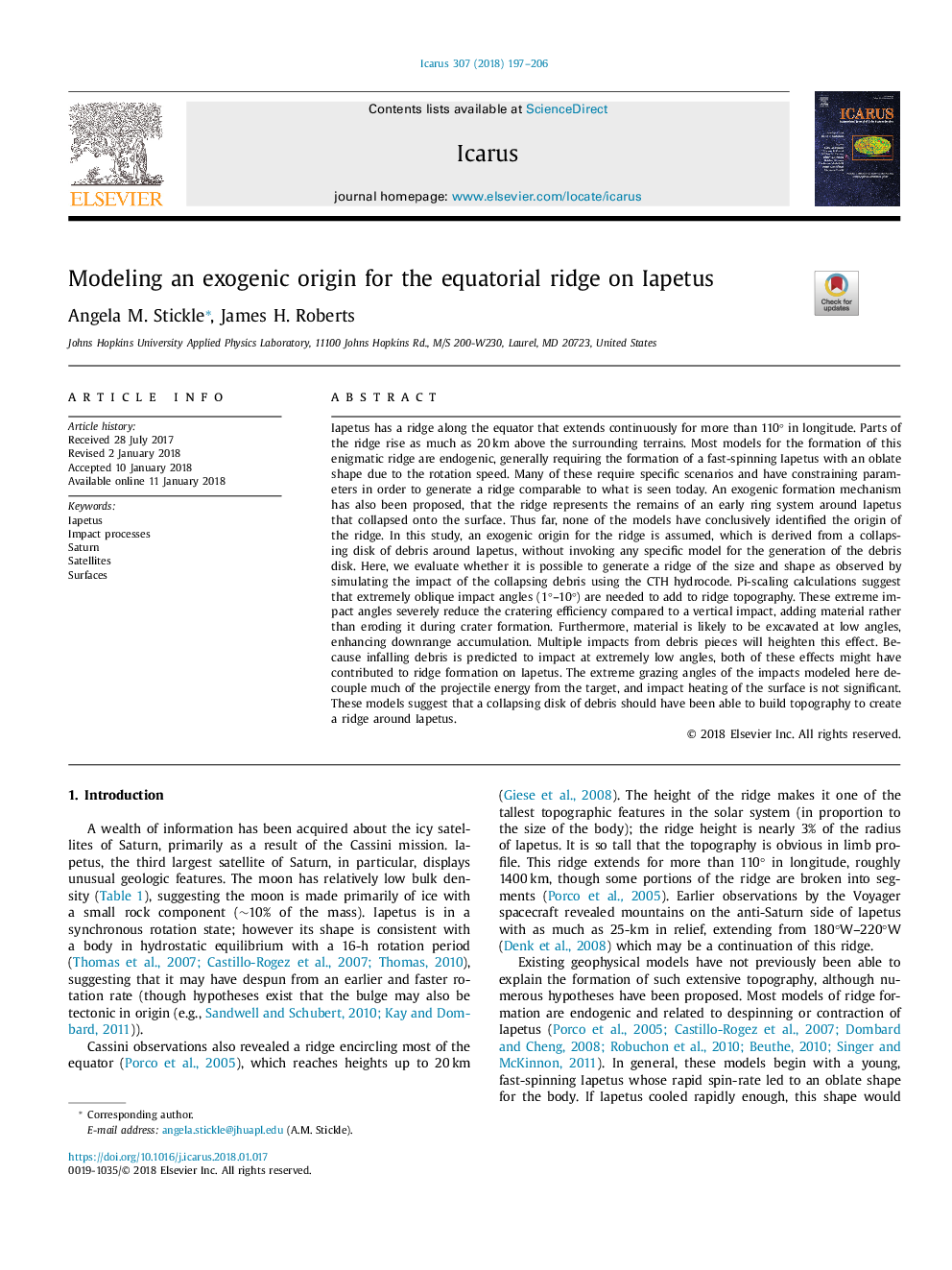| Article ID | Journal | Published Year | Pages | File Type |
|---|---|---|---|---|
| 8134229 | Icarus | 2018 | 10 Pages |
Abstract
Iapetus has a ridge along the equator that extends continuously for more than 110° in longitude. Parts of the ridge rise as much as 20â¯km above the surrounding terrains. Most models for the formation of this enigmatic ridge are endogenic, generally requiring the formation of a fast-spinning Iapetus with an oblate shape due to the rotation speed. Many of these require specific scenarios and have constraining parameters in order to generate a ridge comparable to what is seen today. An exogenic formation mechanism has also been proposed, that the ridge represents the remains of an early ring system around Iapetus that collapsed onto the surface. Thus far, none of the models have conclusively identified the origin of the ridge. In this study, an exogenic origin for the ridge is assumed, which is derived from a collapsing disk of debris around Iapetus, without invoking any specific model for the generation of the debris disk. Here, we evaluate whether it is possible to generate a ridge of the size and shape as observed by simulating the impact of the collapsing debris using the CTH hydrocode. Pi-scaling calculations suggest that extremely oblique impact angles (1°-10°) are needed to add to ridge topography. These extreme impact angles severely reduce the cratering efficiency compared to a vertical impact, adding material rather than eroding it during crater formation. Furthermore, material is likely to be excavated at low angles, enhancing downrange accumulation. Multiple impacts from debris pieces will heighten this effect. Because infalling debris is predicted to impact at extremely low angles, both of these effects might have contributed to ridge formation on Iapetus. The extreme grazing angles of the impacts modeled here decouple much of the projectile energy from the target, and impact heating of the surface is not significant. These models suggest that a collapsing disk of debris should have been able to build topography to create a ridge around Iapetus.
Related Topics
Physical Sciences and Engineering
Earth and Planetary Sciences
Space and Planetary Science
Authors
Angela M. Stickle, James H. Roberts,
